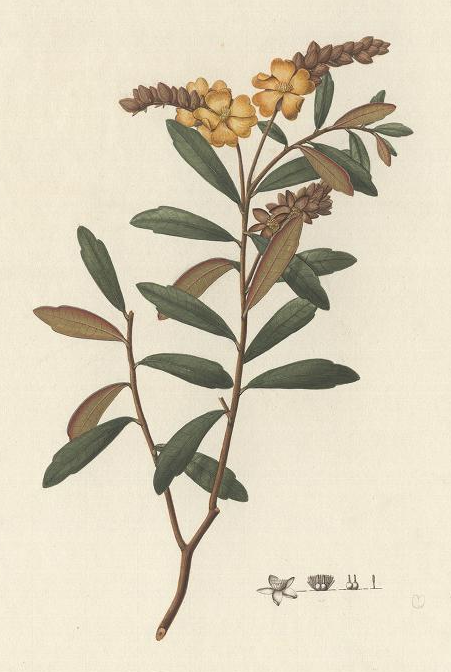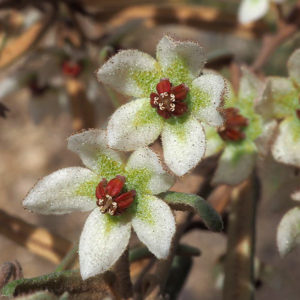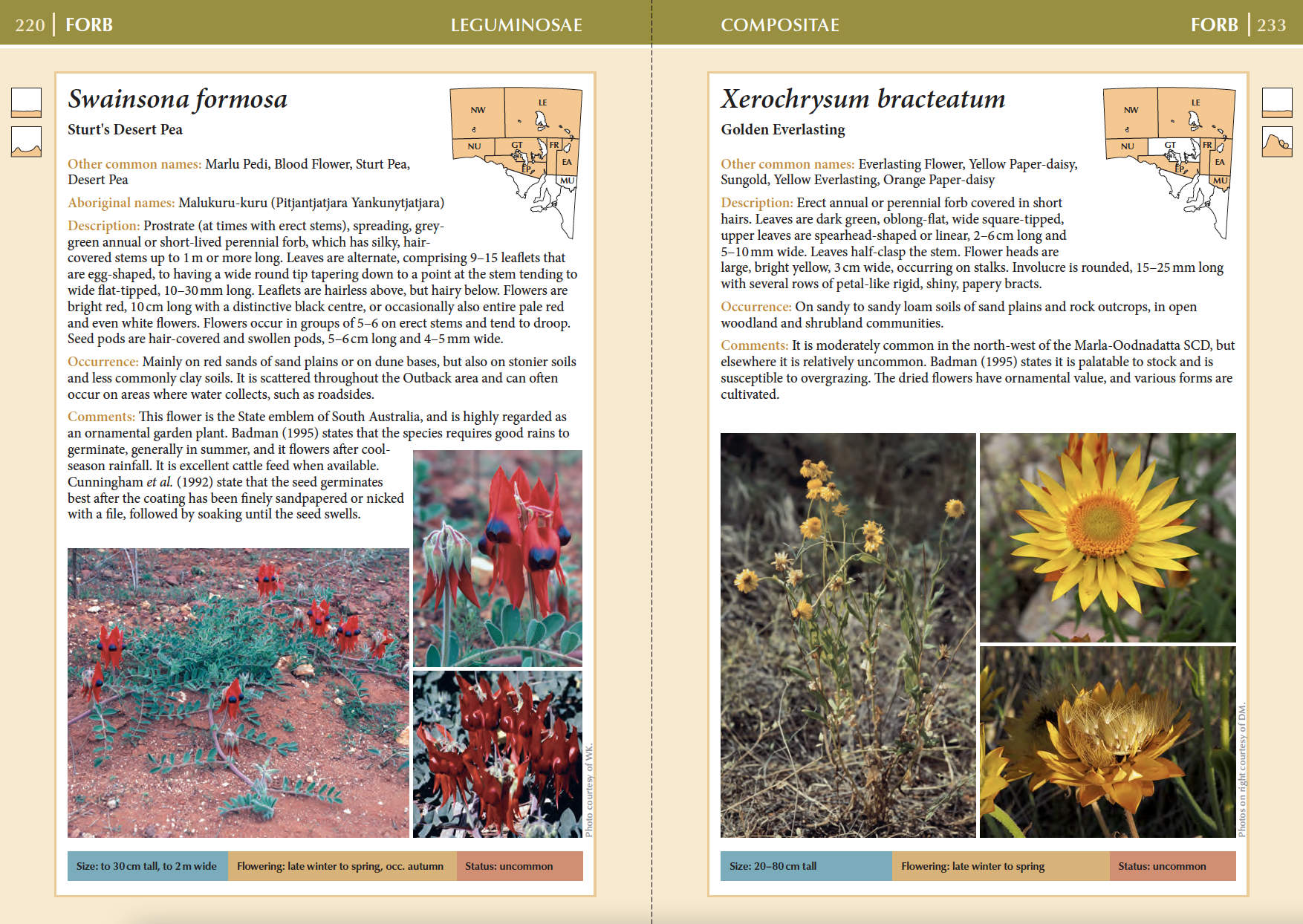
Hibbertia banksii. Watercolour by F.P. Nodder from sketches by Sydney Parkinson, the artist on Cook’s first voyage. Library & Archives, Natural History Museum, London (BM).
The State Herbarium of South Australia published three articles in Vol. 37 of the online version of its journal Swainsona today, 17 Aug. 2023.
(1) H.R. Toelken, Notes on Hibbertia (Dilleniaceae: subgen. Hemistemma) – 12. The northern Australian species of the H. banksii group (3.5mb PDF).
Hon. Research Associate Hellmut Toelken continues his revisions of the species of Hibbertia in Australia with this treatment of Hibbertia banksii and related taxa.
Twelve species and three subspecies are described in detail. Two species and three subspecies are described as new. All these plants occur in tropical Australia, i.e. the northern parts of Western Australia, the Northern Territory and Queensland. Identification keys are provided, as well as a line drawing with all species.
(2) J. Salter, An unusual bud type in eucalypt flower morphology – another character to add to the Eucalyptus (Myrtaceae) suite (11.2mb PDF).
New Zealand botanist Joshua Salter describes a new type of eucalypt bud, particular to Eucalyptus ser. Melliodorae, which includes for example E. leucoxylon (Yellow Gum) and E. melliodora (Yellow Box).
In this bud type, stamens arise from a ‘hinged’ staminophore, infolded on the inner face of the hypanthium, which lifts the stamens up and out at anthesis.
(3) T.A. Hammer, Hibbertia radians (Dilleniaceae), a new combination from South Australia (6.4mb PDF).
Tim Hammer (State Herbarium of South Australia and The University of Adelaide) discusses the subspecies of Hibbertia empetrifolia and describes the subspecies which occurs in South Australia, H. empetrifolia subsp. radians, as a separate taxon, H. radians. It occurs on Kangaroo Island and the Fleurieu Peninsula. Hibbertia empetrifolia is now restricted to southeastern Australia (NSW, Victoria and Tasmania).
To access content of all volumes of Swainsona and the Journal of the Adelaide Botanic Gardens since Vol. 1 (1976), please visit the journal’s web-site at flora.sa.gov.au/swainsona.










 Among this year’s recipients was
Among this year’s recipients was 
You must be logged in to post a comment.